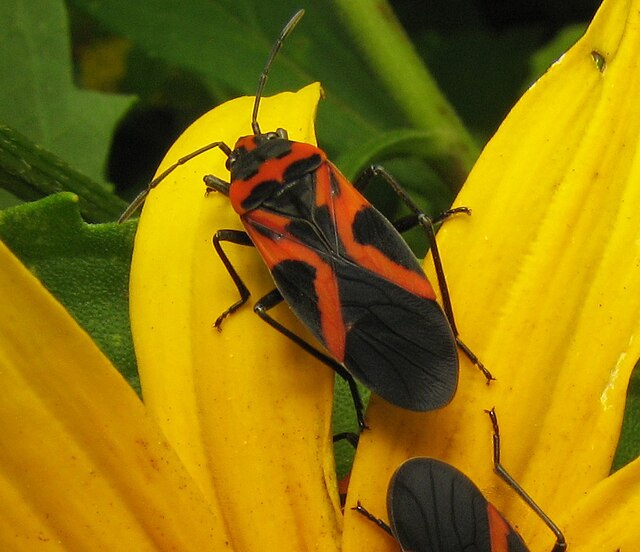The Lygaeidae are a family in the Hemiptera, with more than 110 genera in four subfamilies. The family is commonly referred to as seed bugs, and less commonly, milkweed bugs, or ground bugs. However, while many of the species feed on seeds, some feed on sap (mucivory) or seed pods, others are omnivores and a few, such as the wekiu bug, are carnivores that feed exclusively on insects. Insects in this family are distributed across the world. The family was vastly larger, but numerous former subfamilies have been removed and given independent family status, including the Artheneidae, Blissidae, Cryptorhamphidae, Cymidae, Geocoridae, Heterogastridae, Ninidae, Oxycarenidae and Rhyparochromidae, which together constituted well over half of the former family.
Lygaeidae
False milkweed bug, Lygaeus turcicus, on Asteraceae flower
Small milkweed bug, Lygaeus kalmii), nymph (bottom) and mature (top)
Large milkweed bug, Oncopeltus fasciatus, on a butterfly weed
Hemiptera is an order of insects, commonly called true bugs, comprising over 80,000 species within groups such as the cicadas, aphids, planthoppers, leafhoppers, assassin bugs, bed bugs, and shield bugs. They range in size from 1 mm (0.04 in) to around 15 cm (6 in), and share a common arrangement of piercing-sucking mouthparts. The name "true bugs" is often limited to the suborder Heteroptera.
Hemiptera
Fossil planthopper (Fulgoromorpha) from the Early Cretaceous Crato Formation of Brazil, c. 116 mya
Hemipteran mouthparts are distinctive, with mandibles and maxillae modified to form a piercing "stylet" sheathed within a modified labium.
An ant-mimicking predatory bug Myrmecoris gracilis








